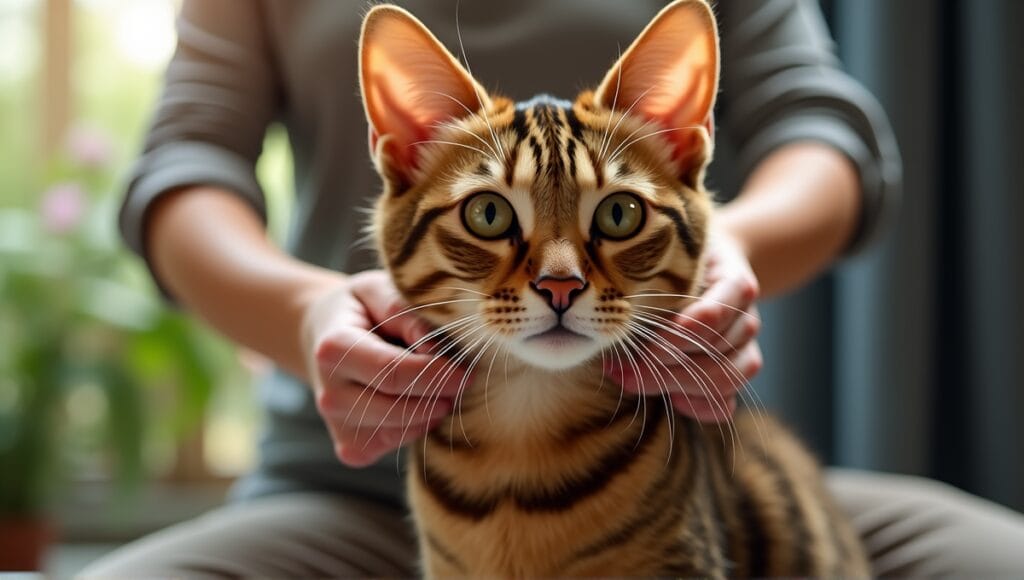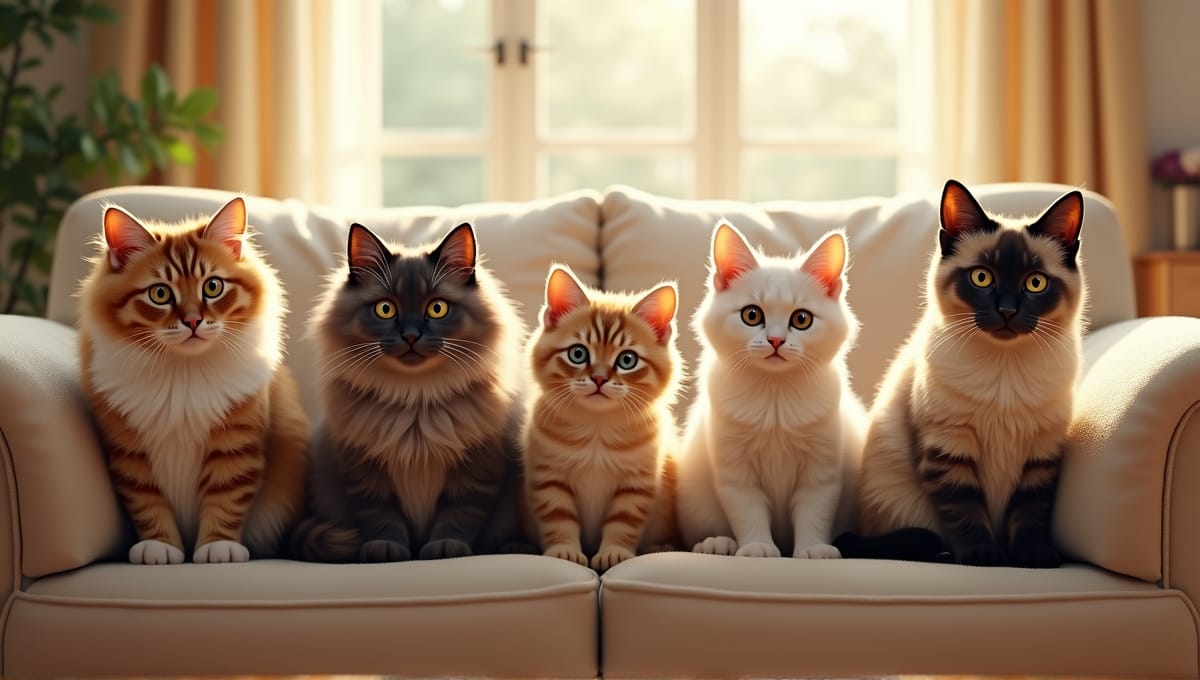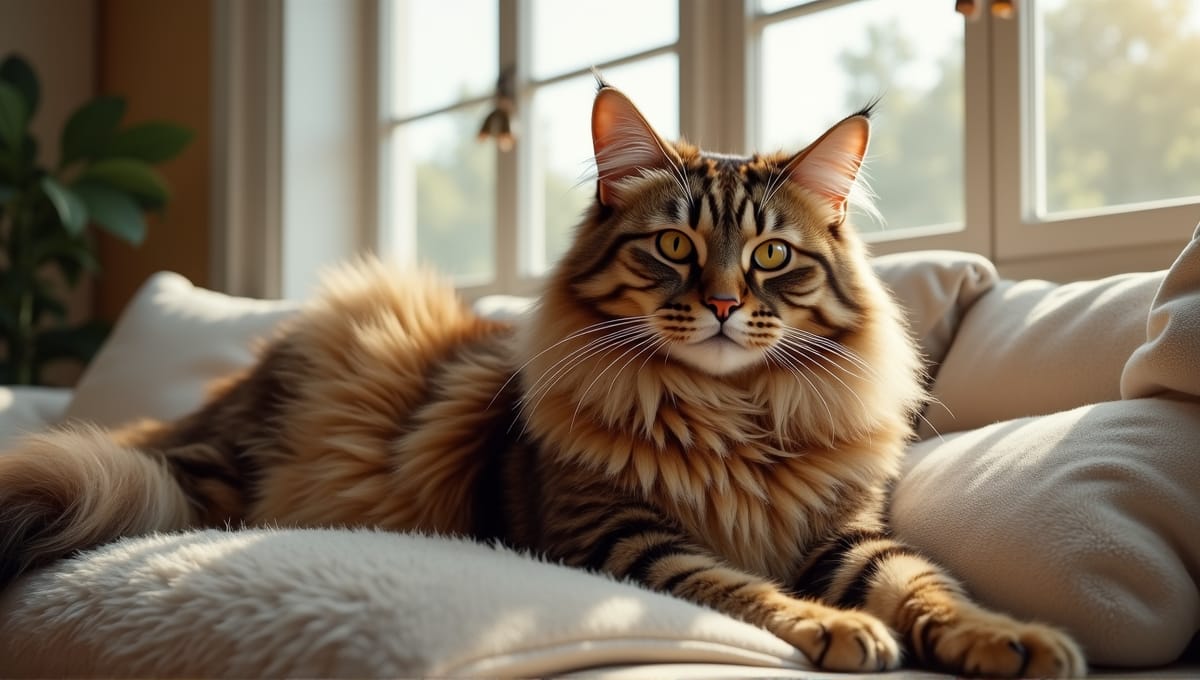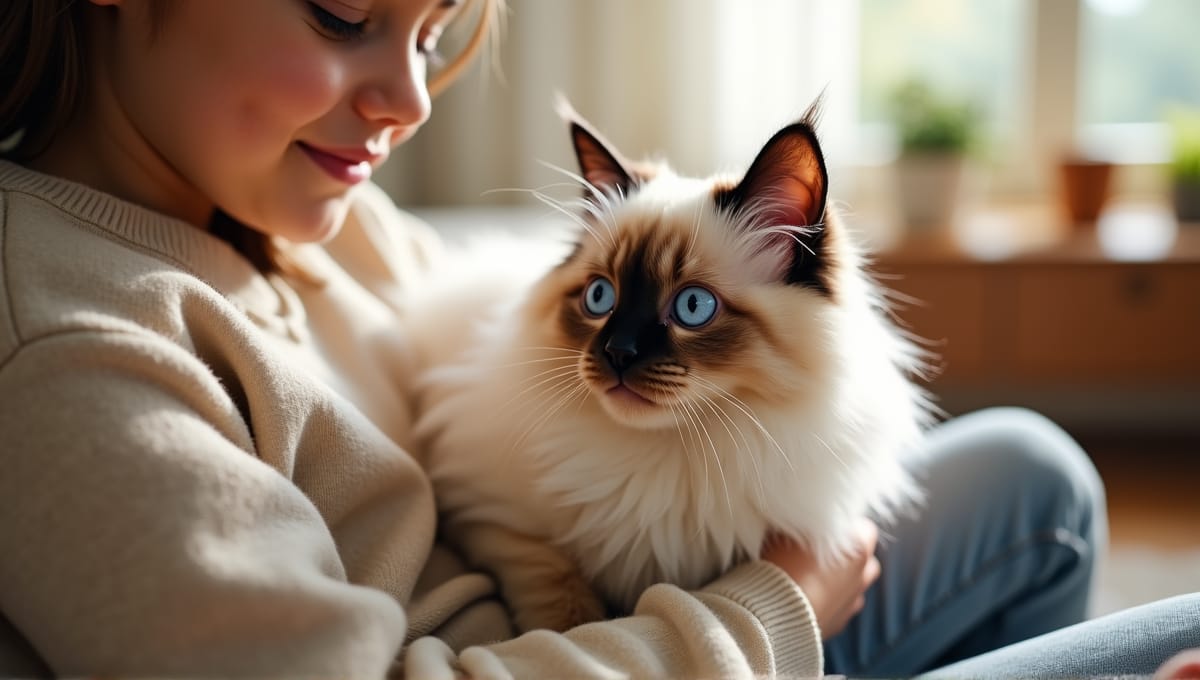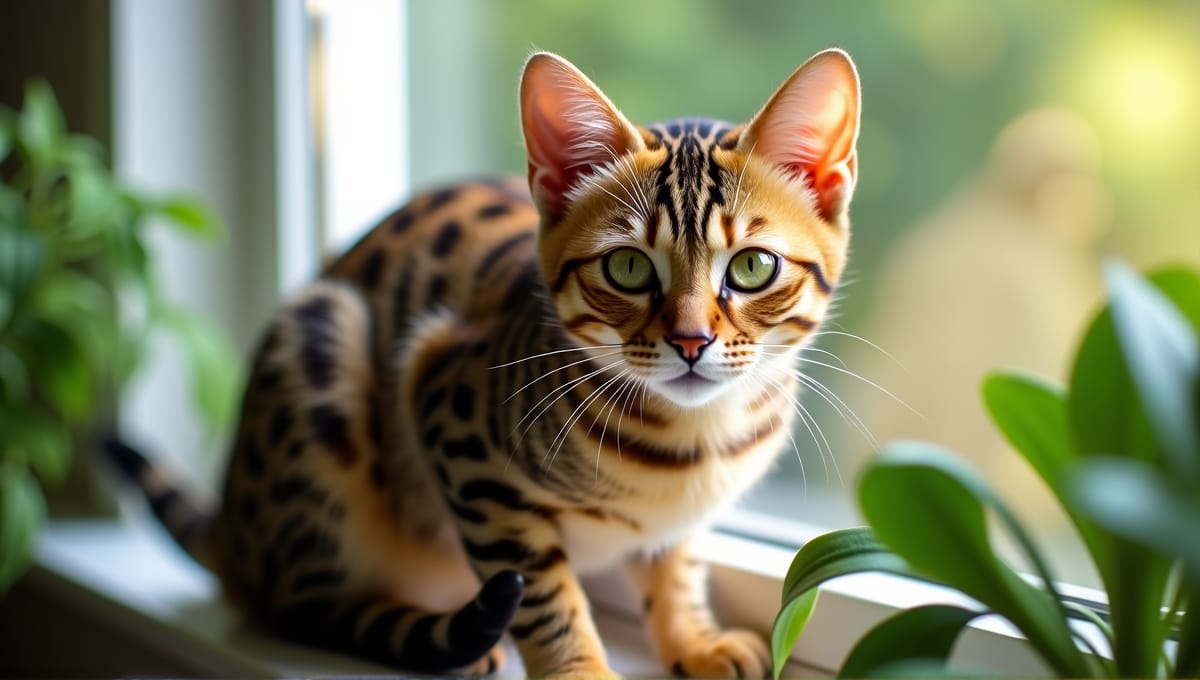Exotic cat grooming is not a one-size-fits-all strategy. Through my years of experience with cats, I’ve discovered that each breed has different grooming requirements. Exotic Shorthairs need to be brushed 2-3 times per week to prevent matting and minimize shedding.
You should bathe them every 4-6 weeks. Good grooming is essential to keeping your exotic cat healthy and happy. You may have to adjust your routine based on your cat.
Understanding Exotic Cat Breeds and Their Grooming Needs
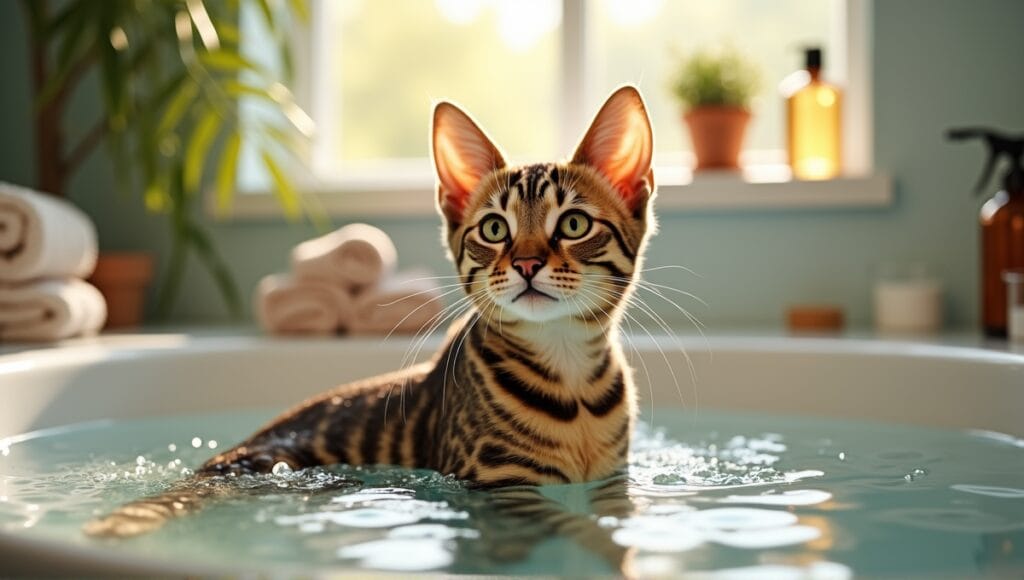
Exotic cat breeds offer a glimpse into a world of different and interesting feline beauty. Having worked with these breeds for many years, I can attest to the fact that they aren’t your average cat. Each exotic breed has its own look and personality. And the same can be said for their grooming needs.
So, let’s discuss a few popular exotic breeds. The Sphynx is perhaps most commonly associated with a unique hairless body. While these cats don’t require traditional grooming, they still need their skin cleaned regularly due to the oils their skin produces. Bengal cats look a bit like mini wild cats due to their spotted coat. Bengals don’t require as much grooming as some other exotic breeds, but they still need a decent amount of grooming to keep their coat looking shiny and clean.
Maine Coons are gentle, giant cats with long, luxurious fur. To prevent their hair from matting, they require frequent brushing. Exotic Shorthairs are known for their plush coat with quite a bit of shedding. Regular grooming helps keep shedding under control and keeps their coat in good condition.
Every exotic breed has its own grooming needs. Understanding these needs is essential to your cat’s health and happiness. In other words, grooming these cats isn’t a one-size-fits-all approach. What works (and doesn’t work) for one breed won’t work for the other.
Essential Grooming Tools for Exotic Cats
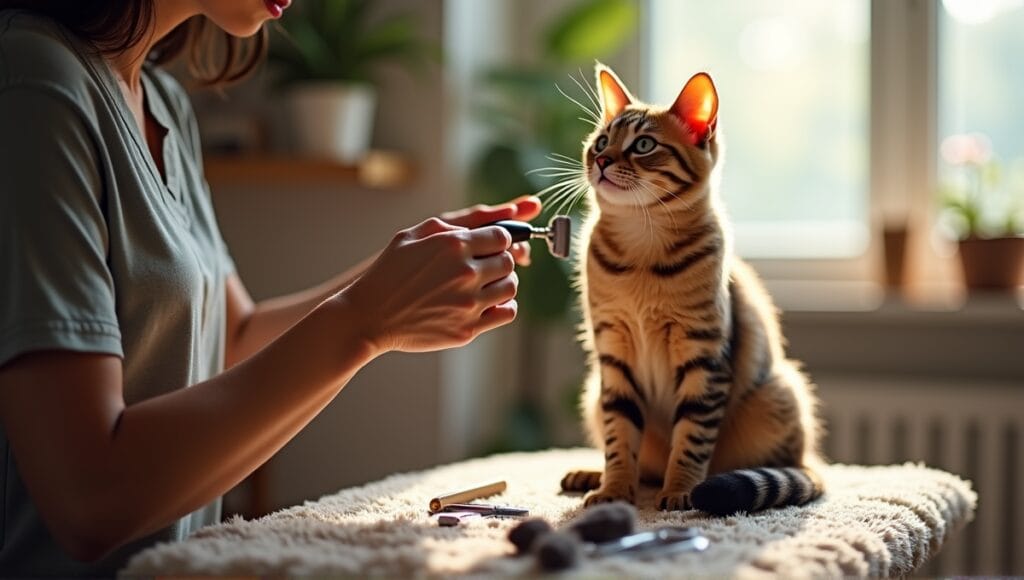
The right tools make grooming your exotic cat much more manageable, and I’ve discovered the best tools through many years of grooming various breeds. Each coat type requires a different brush or comb.
Long-haired cat breeds like Maine Coons need a strong metal comb and a slicker brush. Short-haired breeds like Bengals will only require a soft bristle brush. Sphynx cats need specific cloths to wipe their skin.
Nail care is important for all exotic breeds. Purchase a quality pair of cat-specific nail clippers. These clippers are designed to cut the nail cleanly without causing it to split. Ear cleaning is also an essential part of grooming an exotic cat. Make sure you have a gentle ear cleaning solution and soft cotton balls.
Some exotic breeds may need an occasional bath, so pick up a cat-safe shampoo that won’t irritate their skin. Additionally, don’t overlook dental care, as dental disease is common in exotic breeds. You’ll need a cat toothbrush and cat toothpaste to prevent dental disease in your exotic breed.
Bathing Techniques for Exotic Cats
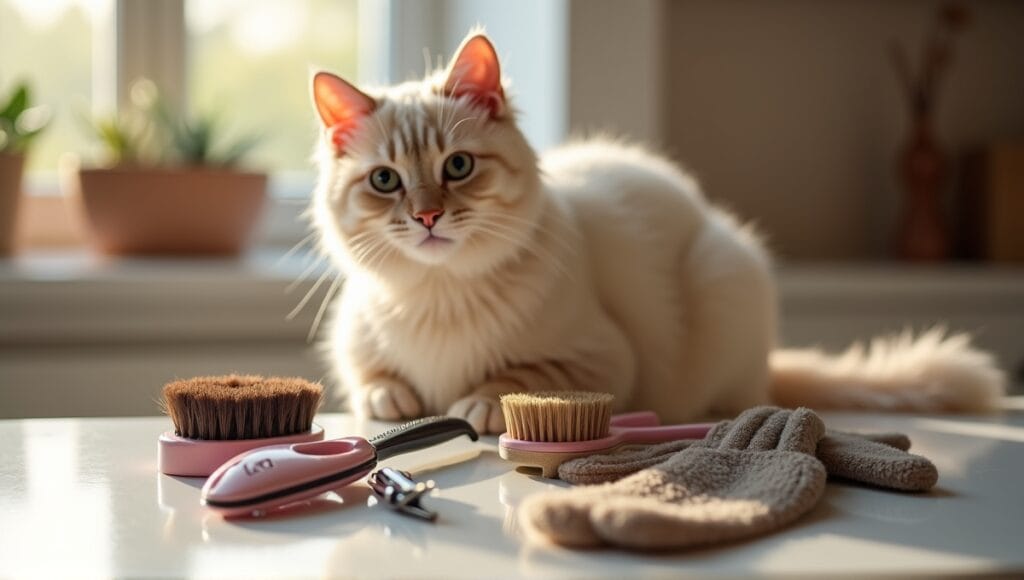
Bathing exotic cats isn’t a one-size-fits-all activity, as the frequency can vary by breed and the specific cat. For example, while Sphynx cats need baths once a week, other breeds may need a bath only every few months or when they get dirty.
Here’s a general step-by-step process for how to bathe an exotic cat:
- Prepare everything before bringing your cat to the bathing location.
- Use lukewarm water (never too hot or cold).
- Gently wet your cat’s body, excluding the head.
- Lather your cat with cat-specific shampoo, being very gentle.
- Thoroughly rinse any soap off of your cat.
- Wrap your cat in a warm towel and pat dry it.
- If your cat likes the blow dryer, use on low heat.
The most important thing to remember is to keep bath time as low-stress as possible. Speak softly with your cat, and offer treats if your cat will even still food during bath time. With enough patience and practice, bath time can even become a bonding activity for you and your exotic cat.
Coat Maintenance for Exotic Cat Breeds
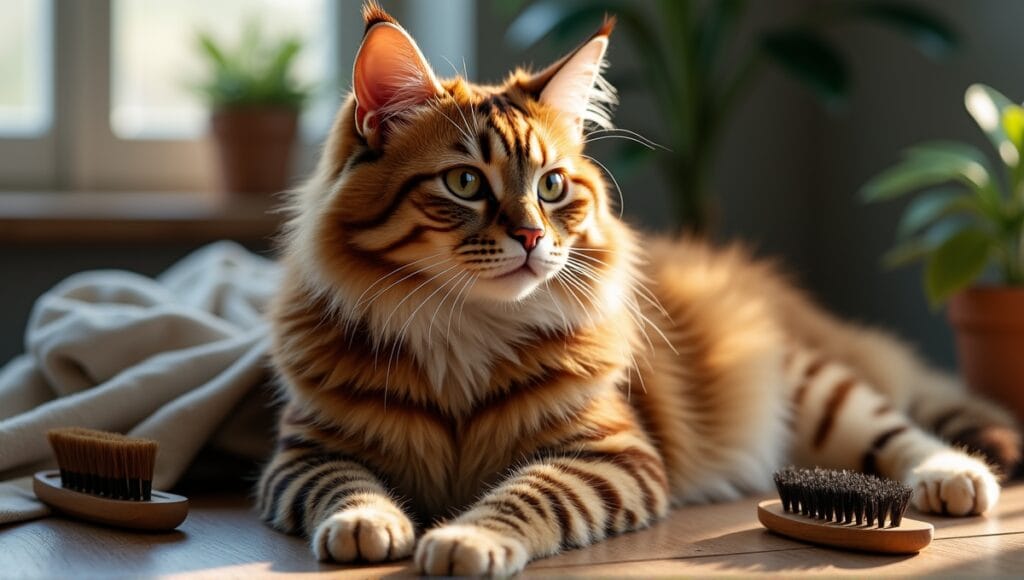
Coat maintenance is essential to ensuring your exotic cat looks and feels their best. If you have a long-haired exotic, such as a Maine Coon, you should brush them daily to prevent tangles and mats. Use a wide-tooth comb and then a bristle brush. Start brushing from the head down, and be very gentle around sensitive areas.
Short-haired exotics, such as Bengals, shed less frequently, but you should still brush them regularly. A rubber grooming mitt is ideal for short-haired cats, as it removes loose fur and helps distribute natural oils throughout the coat. Aim to brush short-haired exotics at least once per week.
Some exotic cat breeds are prone to matting. If you notice mats developing in your cat’s coat, do not try to cut them out yourself, as you may accidentally cut your cat’s skin. Instead, use a mat splitter or take your cat to a professional groomer who can help you remove the mat. The best solution, however, is preventing mats from forming in the first place through regular grooming.
You can also give your exotic cat dietary supplements to help promote a healthy coat. Omega-3 fatty acids are particularly helpful. Always check with a vet before adding any supplements to your cat’s diet.
Nail Care for Exotic Cats
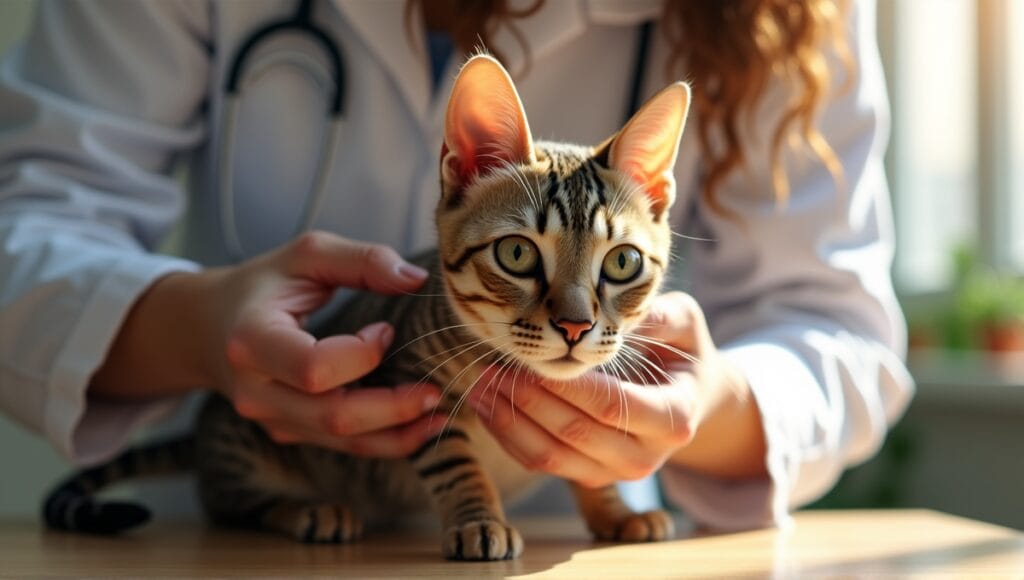
Regular nail trimming is important to keep your exotic cat comfortable and healthy. Overgrown nails can be painful and may even lead to infections. Most cats require nail trimming every 2-3 weeks.
Here’s how to trim your exotic cat’s nails safely:
- Choose a time when your cat is calm
- Gently press on the paw to extend the claws
- Only trim the white tip and avoid the quick (pink)
- Give your cat treats after each paw
Indoor exotic cats typically need more frequent nail trimming than outdoor cats since their nails don’t naturally wear down from outdoor activities. To help your cat maintain its nails between trimmings, provide scratching posts.
If you don’t feel comfortable trimming your cat’s nails, consider professional grooming. While it costs more, professional groomers are experienced with exotic breeds and know how to trim nails safely.
Ear Cleaning and Maintenance for Exotic Cats
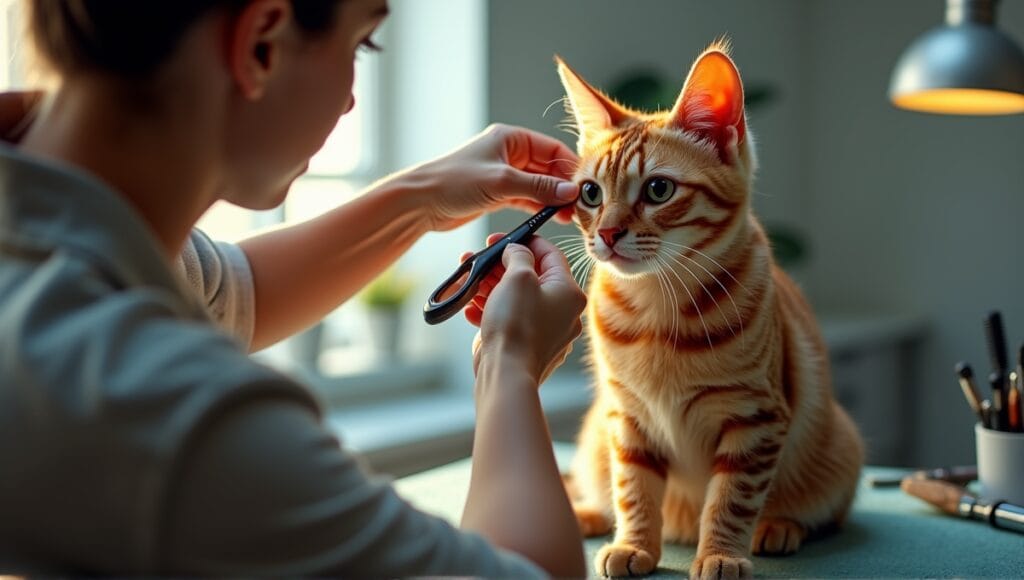
Ear health is something many cat owners overlook, but it’s especially important for exotic breeds. Some exotics are prone to ear problems due to the shape of their ears. Keep an eye out for excessive scratching, head shaking, or a strong smell, as these are all signs of an ear problem.
Here’s how to clean your exotic cat’s ears step by step:
- Select a cat-specific ear cleaning solution
- Gently hold your cat’s head
- Squirt the ear cleaner into your cat’s ear canal
- Massage the base of the ear for 30 seconds
- Allow your cat to shake its head to remove any excess solution
- Wipe away any debris with a soft cloth or cotton ball
- Repeat this process with the other ear
The frequency with which you should clean your cat’s ears depends on the breed. Cats with large, erect ears, like Maine Coons, may require weekly cleanings. Breeds with smaller ears may only need their ears cleaned once a month.
To prevent ear infections in exotic cats, simply clean their ears regularly and check them frequently for any unusual discharge, redness, or swelling. If you notice anything out of the ordinary, consult your vet immediately.
Dental Care for Exotic Cats
Dental hygiene is important for all cats, but some exotic breeds are more susceptible to dental issues. Regular teeth cleaning can prevent gum disease, bad breath, and more serious health concerns.
Ideally, you should brush your exotic cat’s teeth every day. Use a cat-specific toothbrush and toothpaste. Never use human toothpaste, as it can be toxic to cats. To introduce your cat to brushing, let it lick a small amount of the toothpaste off your finger. Then, gradually introduce the toothbrush.
If your cat won’t allow you to brush its teeth, there are other options. Dental treats and toys can help control plaque. Some cat foods are designed to support dental health. There are also water additives that can help maintain their oral hygiene.
Keep an eye out for signs of dental issues in your exotic cat, such as bad breath, difficulty eating, and swollen gums. Your vet can recommend the best dental care routine for your specific exotic breed, and they may need a professional dental cleaning from time to time.
Health Considerations in Exotic Cat Grooming

Grooming is not only about aesthetics, but it’s also an essential opportunity to check the health of your exotic cat. Some exotic breeds are predisposed to specific health issues, which you can catch while grooming.
For example, skin issues are common in some exotic breeds. Sphynx cats, for instance, are prone to skin irritations and fungal infections, making regular bathing and skin checks essential for this breed. Bengals, meanwhile, may have skin allergies, which you can notice if they’re scratching excessively.
Respiratory issues are a concern for brachycephalic (flat-faced) breeds, such as the Exotic Shorthair. These cats often have more respiratory problems, so keep grooming sessions short and low-stress. Adult Exotic Shorthairs usually weigh anywhere from 7 to 14 pounds and live an average of 12 to 15 years.
Eye care is particularly essential for flat-faced exotics, so make sure to gently wipe around their eyes daily to prevent tear stain buildup. Additionally, this breed is also prone to eye issues due to their facial structure. You’ll also want to pay special attention to dental care, as they also have more dental issues. Therefore, daily teeth brushing is a smart way to prevent this.
While grooming, always scan your cat’s body for any lumps, bumps, or changes. If you observe anything out of the ordinary or if your cat seems like grooming is painful, ask your vet for help. Just keep in mind the Exotic Shorthair’s respiratory issues, eye problems, and dental issues due to their flat face.
Professional Grooming Services for Exotic Cats
Professional grooming is a great option for exotic cats at times. Professional groomers have breed specific experience, special tools, and experience with all breeds. Additionally, they can complete more difficult grooming tasks that you might struggle with at home.
When selecting a professional groomer for your exotic cat, ensure that they have breed specific experience. Ask about their training and any certifications they have obtained. A quality exotic cat groomer should be able to tell you about their grooming process and answer any of your questions.
Professional grooming services typically include a bath, coat trim, nail clip, and ear clean. Some groomers also provide additional services, such as de-mating or lion cuts for long haired breeds. The frequency at which you need a professional groomer depends on your cat’s breed and individual grooming requirements.
Before the grooming appointment, get your cat used to being handled and bring their favorite treats to the appointment. This will ensure that the grooming appointment is a positive experience for your exotic cat.
DIY Grooming Tips for Exotic Cat Owners
Having a comfortable grooming space at home will significantly improve your exotic cat’s grooming experience. Select a quiet room with good lighting. Prepare all grooming tools within reach before you begin.
Consistency is key, so be sure to establish a regular grooming schedule. Exotic Shorthairs should be brushed 23 times per week to prevent matting and reduce shedding. Additionally, you should bathe your cat every 46 weeks, or as needed. Developing a routine will help your cat become more comfortable with the grooming process.
Some exotic cats are more difficult to groom than others. Experiment with different handling techniques to see what your cat responds best to. Some cats may not enjoy long grooming sessions, but can handle shorter, more frequent sessions. Always be gentle, yet firm to ensure your cat stays in place.
Positive reinforcement is the name of the game when grooming your cat. Offer treats, praise, and petting during and after grooming. This will help your cat associate grooming with good things.
If you’re facing challenges grooming your cat, he or she might resist having nails trimmed, or ears cleaned, for example. If this is the case, introduce these activities gradually and with patience. If you still can’t work through a specific grooming issue, ask your vet or a professional groomer for advice.
When it comes to choosing the right exotic cat for your home, consider low-maintenance cat breeds if you’re new to cat ownership or have a busy lifestyle. These breeds often require less intensive grooming routines while still providing companionship and affection.
Final Takeaways
Exotic cats need to be groomed according to their specific breed and its grooming requirements. Whether it’s the hairless Sphynx or the long-haired Maine Coon, each breed has a grooming schedule it requires. Regular brushing, bathing, nail trimming, and dental care are grooming essentials.
While professional groomers offer excellent assistance, you can groom most of these breeds yourself with the right tools and knowledge. I’ve yet to meet an exotic cat that grooming couldn’t help. Congratulations – you’re ready to help your exotic cat look and feel great.


